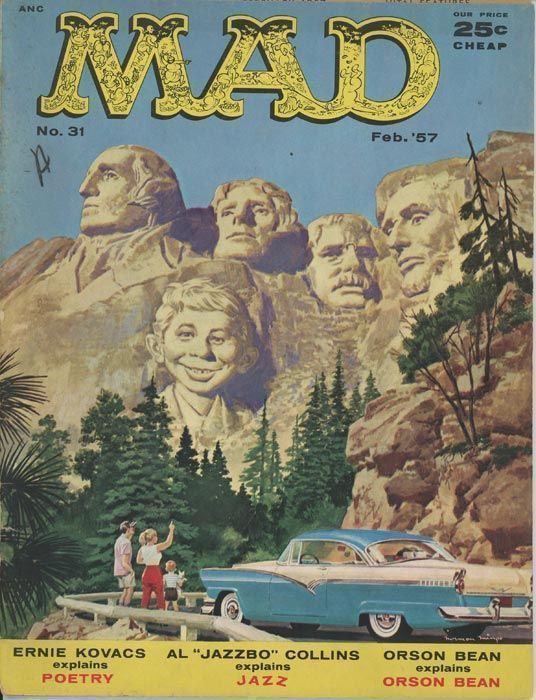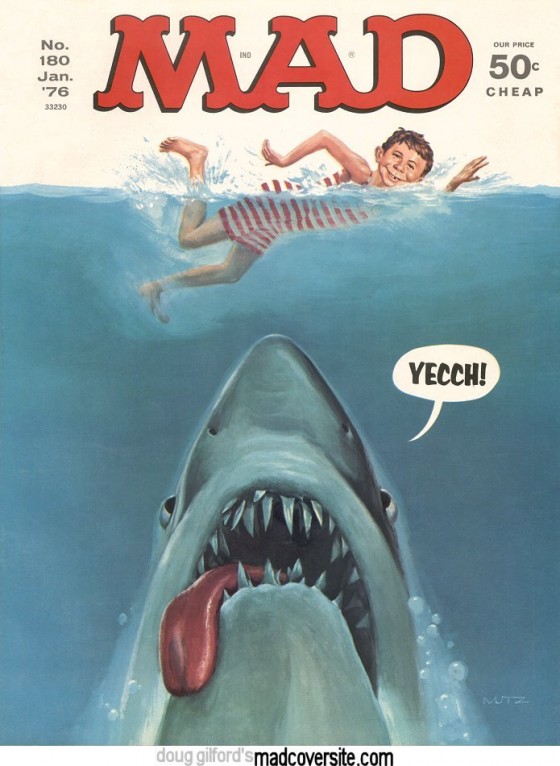








Lets hope these scenarios stay as Art only.
Mad (stylized as MAD) is an American humor magazine founded in 1952 by editor Harvey Kurtzman and publisher William Gaines, launched as a comic book before it became a magazine. It was widely imitated and influential, affecting satirical media, as well as the cultural landscape of the 20th century, with editor Al Feldstein increasing readership to more than two million during its 1974 circulation peak. From 1952 until 2018, Mad had published 550 regular issues, as well as hundreds of reprint “Specials”, original-material paperbacks, reprint compilation books and other print projects. The magazine reverted back to 1 with its April 2018 issue.

Mad’s mascot, Alfred E. Neuman, is typically the focal point of the magazine’s cover, with his face often replacing that of a celebrity or character who is lampooned within the issue.











A more contemporary cover



Apparently the skull is made entirely of fiberglass and the black cushioning is made of leather. Via Neatorama.

